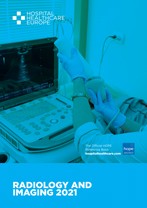This guidance from the Royal College of Radiologists sets out the standards that a department should meet when integrating artificial intelligence into already established systems, producing a safe seamless system with the patients at the centre.
The fast pace of developments in artificial intelligence (AI) means that the technology will have an important role to play in many clinical specialities, including radiology and will change, hopefully in a positive direction, the way in which patient care is delivered.
AI platforms and algorithms are designed to work in collaboration with existing technologies and have a wide range of potential uses in radiology. For example, in magnetic resonance imaging (MRI), an AI algorithm can detect multiple sclerosis, strokes, brain bleeds etc. Within the arena of computed tomography (CT), AI systems are designed to detect skull fractures, brain haemorrhages, infarcts, and tumours. In body CT, the introduction of AI has a role in mammography, allowing for the detection of both suspicious lesions and calcification.
Once an image has been captured by the radiographer, the AI will perform a ‘pre-analysis’ of the image, and, if an abnormality is detected, the system will query and retrieve a prior similar image from the picture archiving and communication system (PACS) for comparative analytical purposes. A further advantage of using an AI system, is ‘computer-assisted triage’, which helps with the prioritisation of reporting worklists once an abnormality has been detected.
Nevertheless, the RCR report emphasises the importance of radiologists acknowledging the limitations of an AI system report, i.e., its sensitivity and specificity, and what these figures mean in the context of the specific pathology. In other words, the AI system is simply a supportive tool and radiologists should not become overly reliant upon on the AI findings and assume that these findings will be 100% accurate all the time.
The overarching aim of the RCR report is firstly to ensure that any innovations in AI are fully integrated into existing reporting systems and secondly, to define the necessary standards required to enable radiology service providers to facilitate this integration without creating additional burden for staff.
The report does not make any specific recommendations about which AI system should be purchased, or any ethical considerations related to its use, and finally discusses the issue of AI solutions for workflow and radiology management efficiency. The report is directed more towards defining the parameters within which an AI platform should operate.
Standards
The report begins with a series of standards for the use of AI systems.
- AI must be integrated seamlessly with existing radiology information systems (RIS) and PACS without creating an additional burden for radiologists.
- The accuracy of the algorithms must be clearly declared to both the radiologist and others involved in patient management.
- The AI finding should be communicated to the RIS and PACS through existing and global technical standards.
- The department workflow should be sufficiently robust to ensure that the analysis is complete and available on PACS before being viewed and interpreted by a human.
An important element of the report is the necessity to ensure that all instrumentation, e.g., scanners, RIS, PACS and the AI platform,
all work cooperatively within the radiology department. It is also necessary that the AI platform only begins the analysis once the radiographer has completed the examination and has sent the information to the AI system, i.e., that the imaging should be ‘pre-analysed’ before reaching the PACS for displayed.
General standards for data output
Any AI platform adopted should have standard output, and which must include:
- Graphical representation of the region of interest (of the detected abnormalities) or mark-up/pointers using global technical standards (DICOM) so that images can be viewed in the PACS viewers.
- AI detected abnormalities should be output as text e.g., fracture, infarct etc.
- A notification that the image analysis has been completed.
- Some AI alerts may be defined as critical within the system and should be pre-specified by the radiologist.
- A declaration or disclaimer should be sent out including the list of any abnormalities which were evaluated by the AI system. This might, for example, include a CT scan that detected a brain haemorrhage. It is also necessary to include the sensitivity and specificity (or true/false positives or negatives) of the applied algorithm for each of the abnormality being evaluated.
With the RIS, it will be necessary to incorporate additional data fields which capture AI abnormalities and any alerts.
The report concludes on a positive note saying that: “AI image pre-analysis is likely to have a very positive impact on radiologists’ future working lives if properly integrated into the reporting workflow”.
A copy of the full guidance can be viewed below




